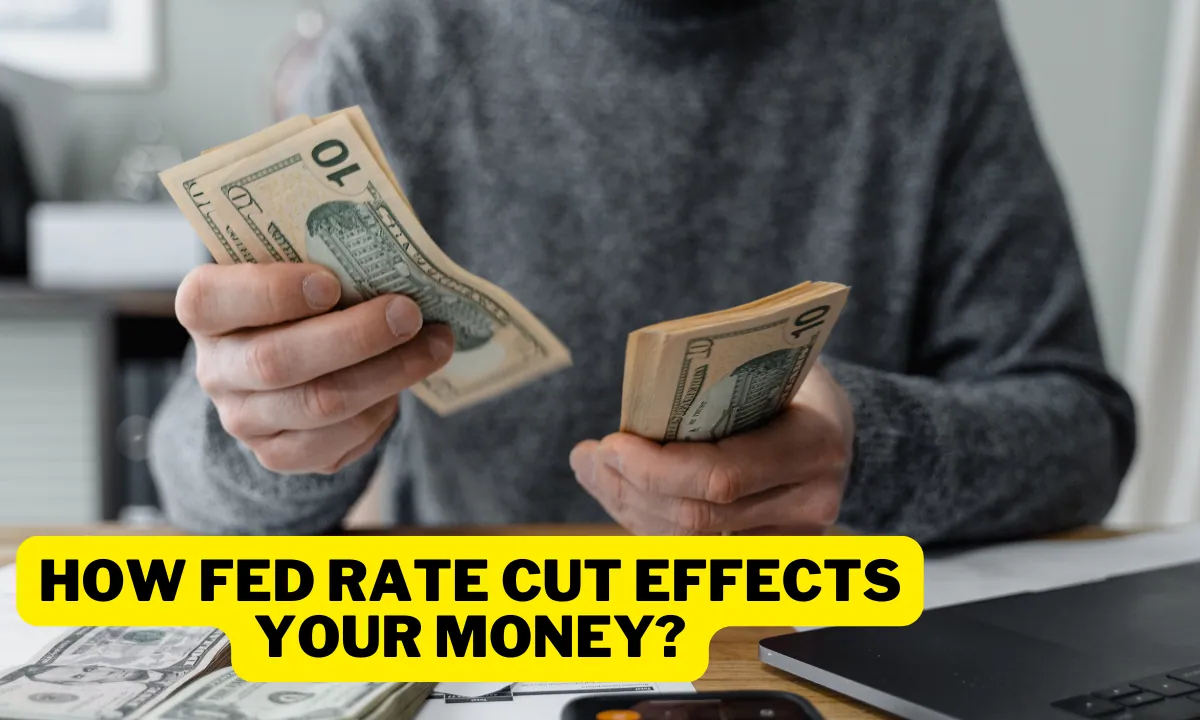The U.S. Federal Reserve has made a significant shift in its monetary policy by announcing a substantial half-point rate cut in short-term interest rates.
After a series of rate hikes aimed at curbing inflation, this U-turn signals a new phase for the economy. But what does this mean for you, your savings, and your loans? Let’s break it down.
What Led to the Fed’s Rate Cut?
The Fight Against Inflation
Since inflation peaked at 9.1% in June 2022, the Federal Reserve has been on a mission to bring it down.
Over the past several months, the Fed increased interest rates 11 times to slow down the economy and stabilize prices.
This aggressive strategy finally showed results as inflation eased to 2.5% by August 2024, much closer to the Fed’s target of 2%.
Why Lower Rates Now?
With inflation cooling and economic indicators suggesting the U.S. economy can withstand lower rates, the Fed decided the time was right for a half-percentage-point rate cut.
After keeping rates steady since August 2023, this move aims to boost economic activity by making borrowing cheaper and encouraging spending.
How the Fed’s Rate Cut Impacts You
The Federal Reserve controls one key rate: the federal funds rate. This is the interest rate at which banks lend to each other on an overnight basis.
While this rate may seem far removed from your everyday life, it has a domino effect that influences nearly every other interest rate in the economy, from mortgages and car loans to savings accounts and credit cards.
Lower Borrowing Costs
Mortgages
If you’re planning to buy a home or refinance your mortgage, a Fed rate cut is good news. Mortgage rates tend to follow the Fed’s lead, so you could see lower interest rates on home loans in the coming months.
This means smaller monthly payments and lower overall interest costs over the life of your mortgage.
Credit Cards and Personal Loans
Credit cards and personal loans usually carry variable interest rates, meaning they fluctuate based on broader economic conditions.
With the Fed lowering rates, your credit card APR may drop, reducing the interest you owe on outstanding balances. Similarly, personal loans may become more affordable, making it easier to manage debt or take out new loans for big purchases.
Auto Loans
Looking to buy a new car? The Fed’s rate cut could make it cheaper to finance your vehicle. With lower interest rates on auto loans, you may get more favorable terms, reducing your monthly payments.
Changes to Savings Accounts and CDs
While lower interest rates are great for borrowers, they’re less appealing for savers. When the Fed cuts rates, banks typically lower the interest they pay on savings accounts, certificates of deposit (CDs), and other deposit products.
You might notice a decline in the interest earnings on your savings, meaning your money grows at a slower pace.
High-Yield Savings Accounts
Even with a rate cut, some online banks and credit unions may continue offering competitive rates, but overall, you can expect the yield on savings accounts to decrease in the coming months.
Certificates of Deposit (CDs)
If you’ve locked in a CD rate before the Fed’s rate cut, your earnings won’t be affected until the CD matures.
However, new CDs issued after the rate cut will likely offer lower interest rates, so now might be a good time to compare options and lock in a rate before it dips further.
What the Fed’s Rate Cut Means for the Economy
Stimulating Economic Growth
Lower interest rates are designed to inject liquidity into the economy, encouraging businesses and consumers to spend more.
By making borrowing cheaper, the Fed hopes to spur growth in sectors like housing, manufacturing, and retail, which can lead to job creation and economic expansion.
Addressing Economic Uncertainty
The U.S. economy has shown signs of slowing down in recent months, with challenges such as rising corporate debt and a cooling housing market.
The Fed’s rate cut aims to prevent the economy from slipping into a recession by providing a cushion for growth.
What’s Next for Interest Rates?
Fed’s Future Plans
During a recent press conference, Fed Chairman Jerome Powell emphasized that the Federal Open Market Committee (FOMC) would not commit to a pre-set course for future rate changes. Instead, they will evaluate economic conditions on a “meeting-by-meeting” basis.
The FOMC’s Dot Plot Projections
The Fed’s “dot plot,” which shows individual FOMC members’ projections for future interest rates, offers insight into what’s to come.
According to Chairman Powell, the median projection for the federal funds rate is 4.4% by the end of the year, with further reductions expected.
By 2025, the rate is expected to drop to 3.4%, nearly 2% lower than where it was before the latest rate cut.
How to Manage Your Finances in a Changing Rate Environment
Consider Refinancing Debt
With interest rates dropping, now could be an excellent time to refinance high-interest debt, such as mortgages, personal loans, or credit card balances. Refinancing can lower your monthly payments and reduce the amount you pay in interest over time.
Reevaluate Your Savings Strategy
If savings account interest rates decline, you might want to explore other low-risk investment options, such as bonds or money market accounts, to earn a better return on your cash.
Stay Informed
Interest rates can fluctuate based on economic conditions, so staying informed about Fed decisions and financial trends can help you make better choices for your money.
Conclusion
The Federal Reserve’s decision to cut interest rates marks a significant shift in monetary policy, with far-reaching effects on borrowing costs, savings rates, and the broader economy.
While borrowers stand to benefit from lower rates on mortgages, credit cards, and personal loans, savers may face lower returns on their accounts.
As the Fed continues to monitor the economy and adjust rates accordingly, staying proactive with your financial planning will help you navigate this evolving landscape.
